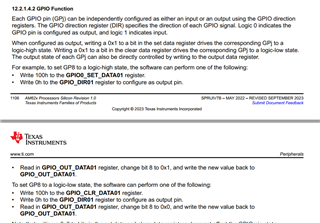Tool/software:
HI
I applied pinctl with gpio0-0 pin in the device tree. I realized the control of gpio by manipulating the register as shown below. I would like to ask if GPIO pins, which are not described in the device tree, can be directly implemented by manipulating registers at the application layer?
thanks



